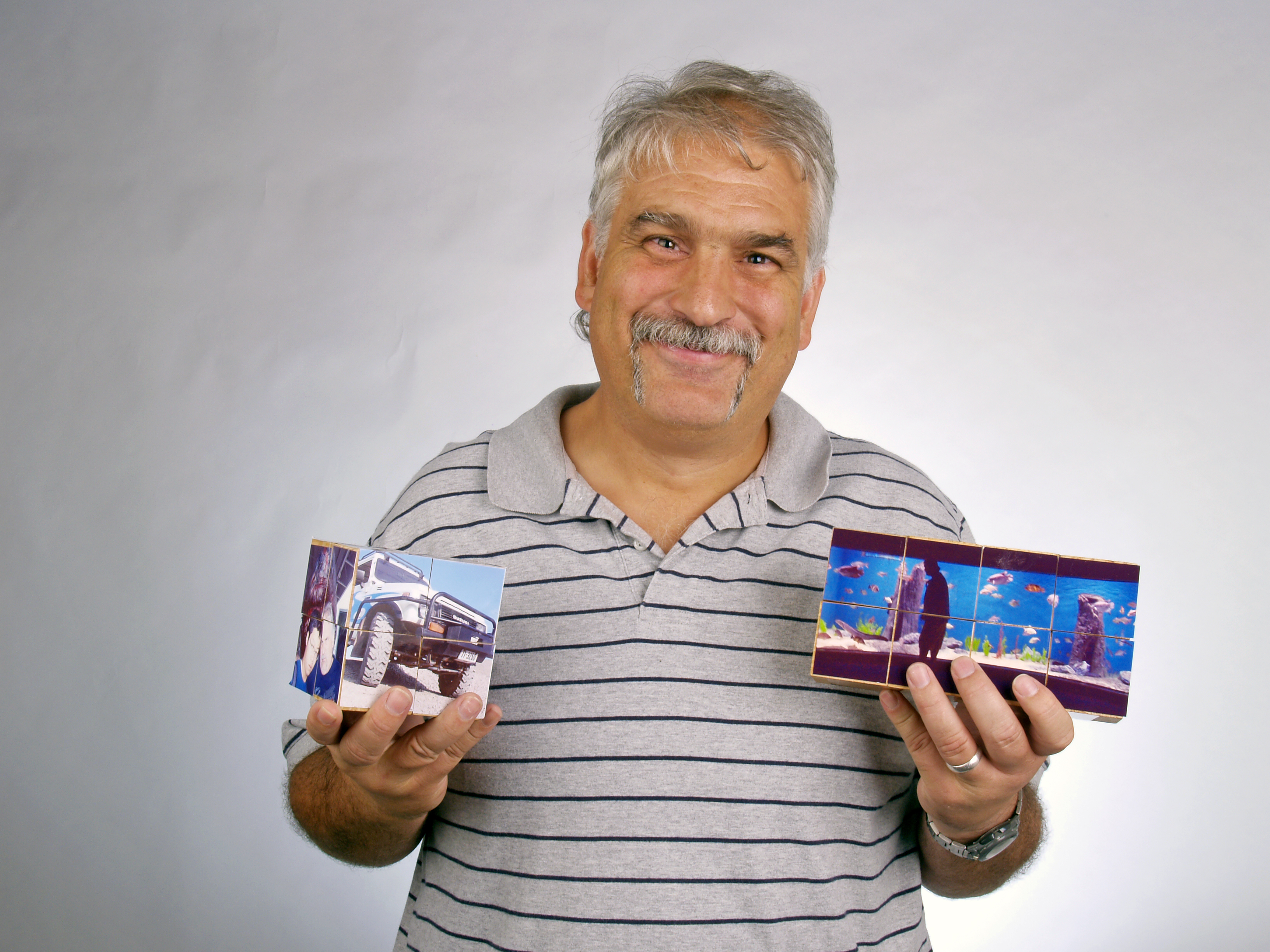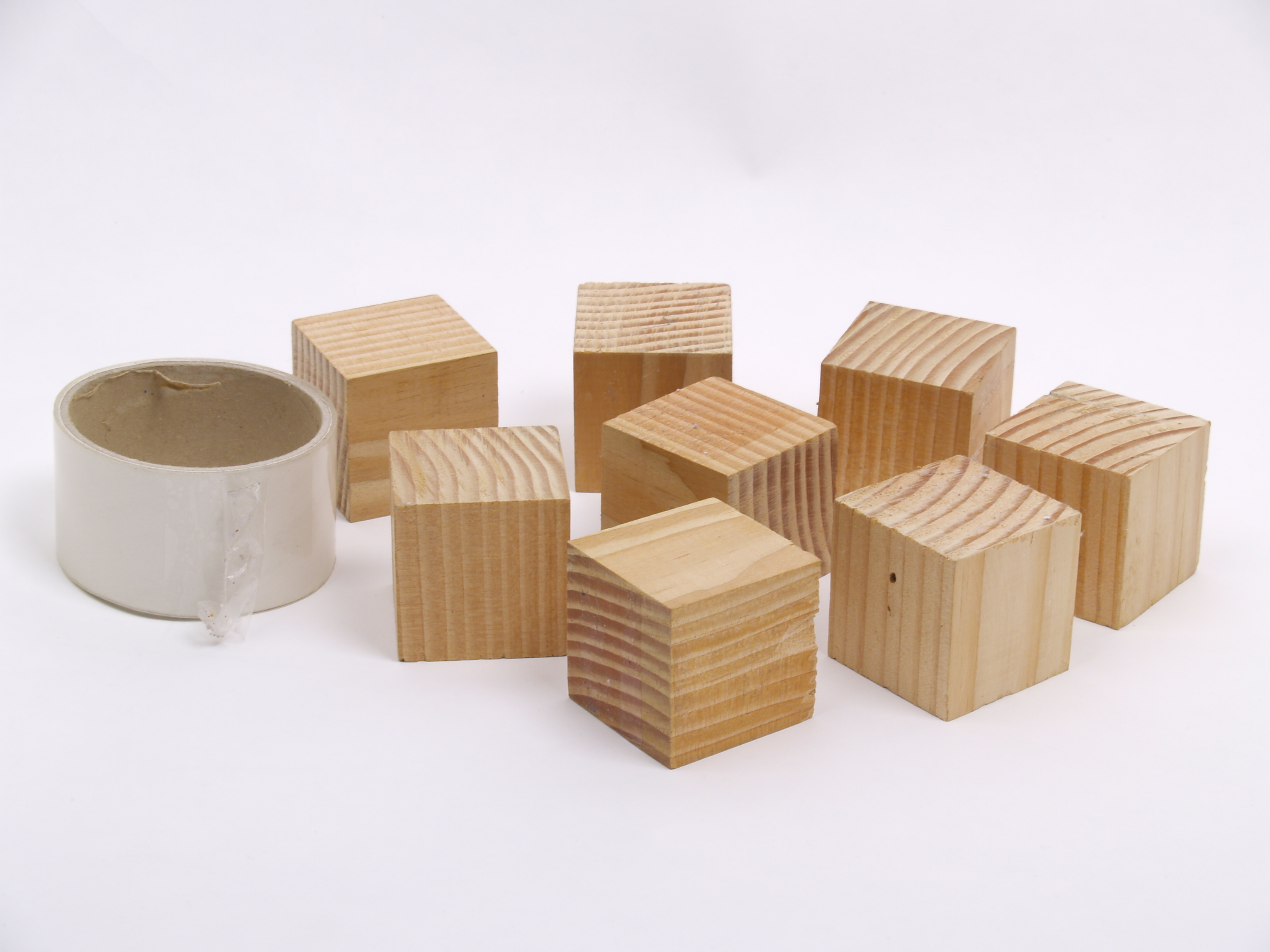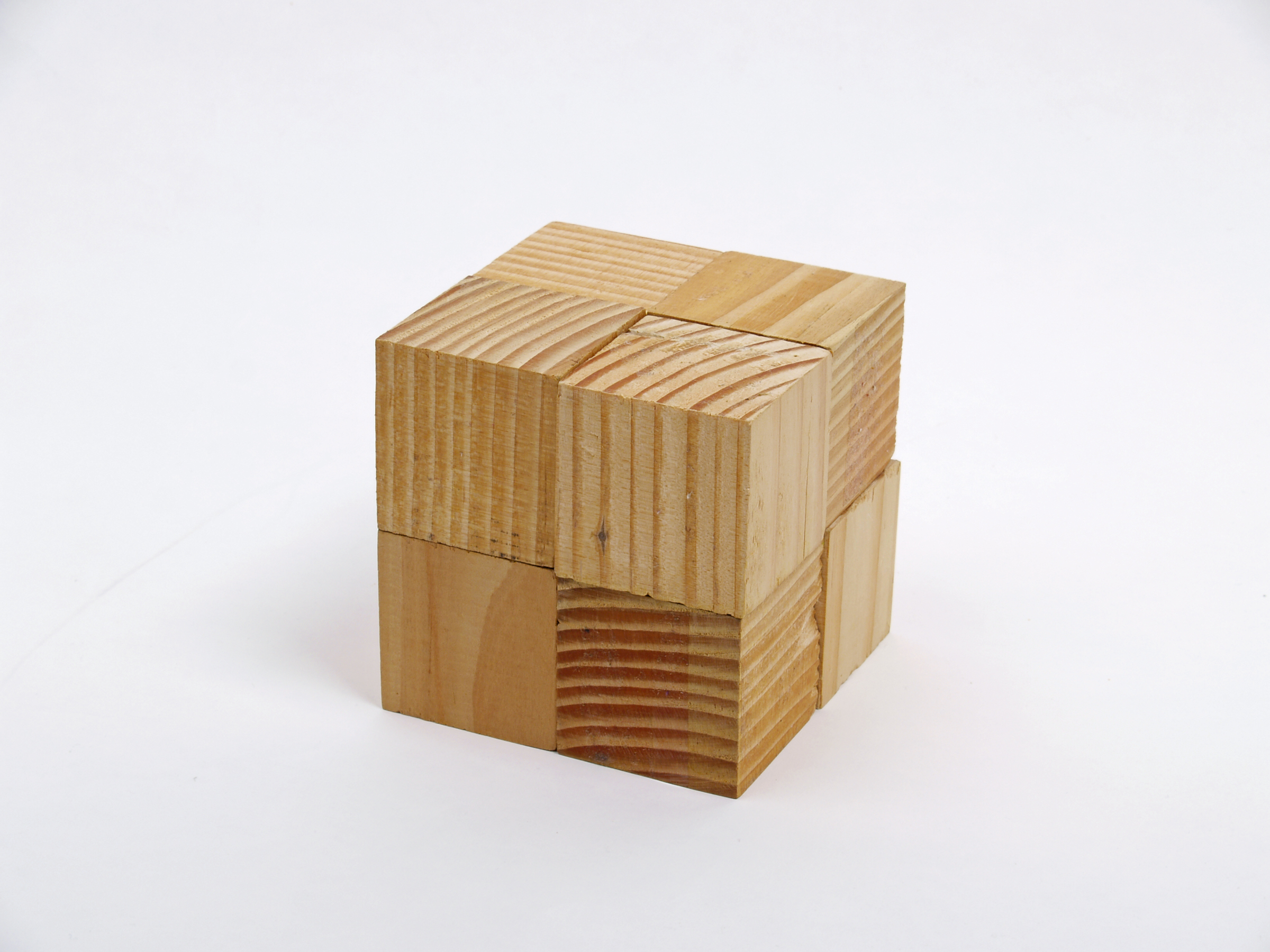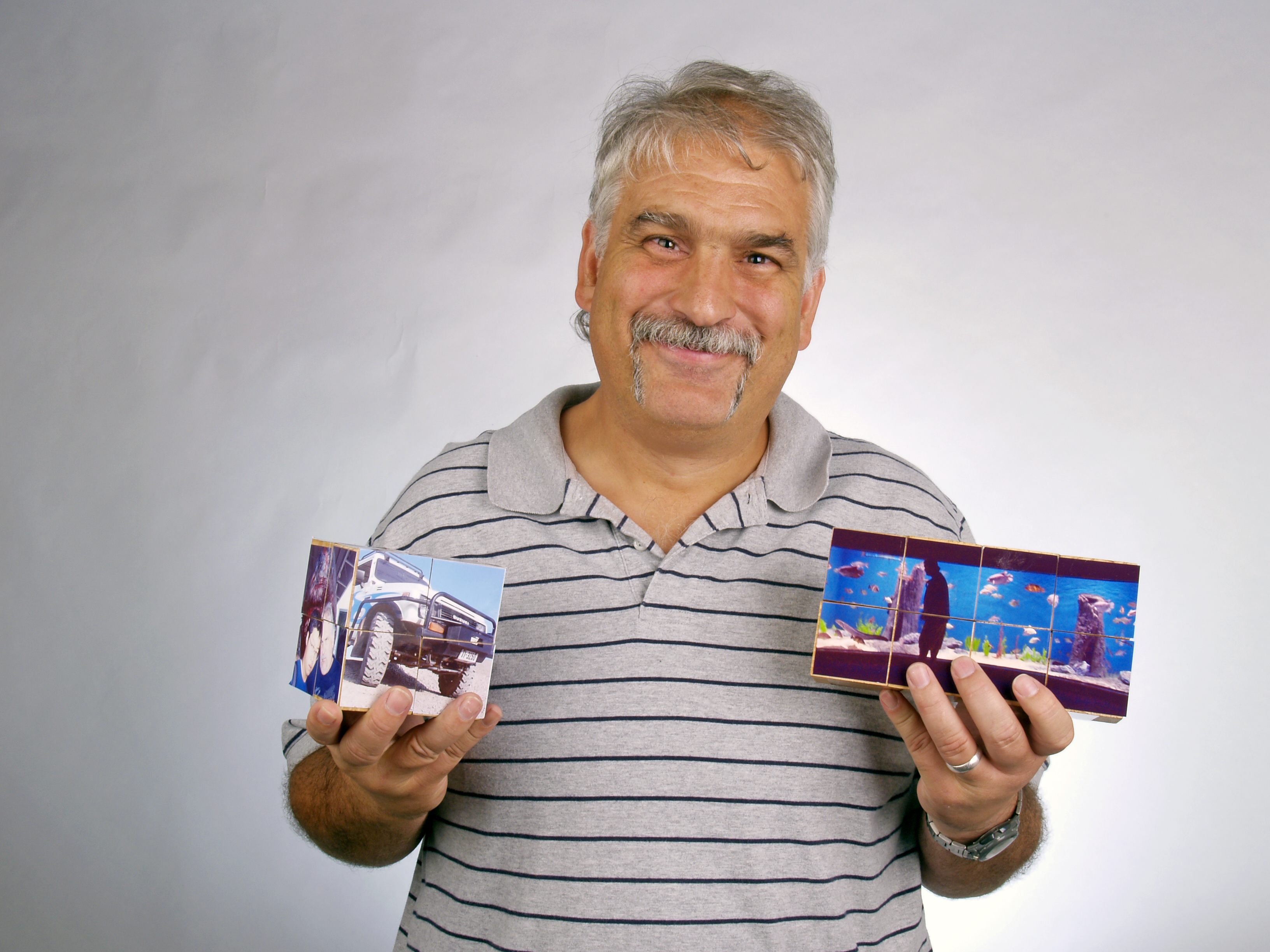Sometimes something comes along that snaps you out of the blur of even the most mind-numbing meeting. I was at this stage when the speaker passed around a demo of the newest training tool — a “magic story cube” that pulls kids into the learning process.
The speaker’s words didn’t grab my attention but the remarkable object in my hands sure did. This was cool. I had to make one.
The magic photo cube (the easy half of a Yoshimoto Cube, a truly impressive object invented in 1971) is made by the clever hinging of 8 smaller, identical, and perfect cubic blocks. I had our local woodshop make 40 nearly identical cubic blocks from scrap. After mixing and matching I was able to make 4 magic photo cubes, each consisting of 8 blocks.
The size of the cubic block doesn’t make any difference for the project. The sides of mine are about 5cm, the perfect size for 48mm-wide clear packing tape.
The magic is all in the hinges. Use strong, clear packing tape for hinges, taping the front and back of each joint. Rub the tape down with a “bone” — that’s what my dad called whatever smooth steel thing he used to make tape stick — such as a socket out of the tool chest.













